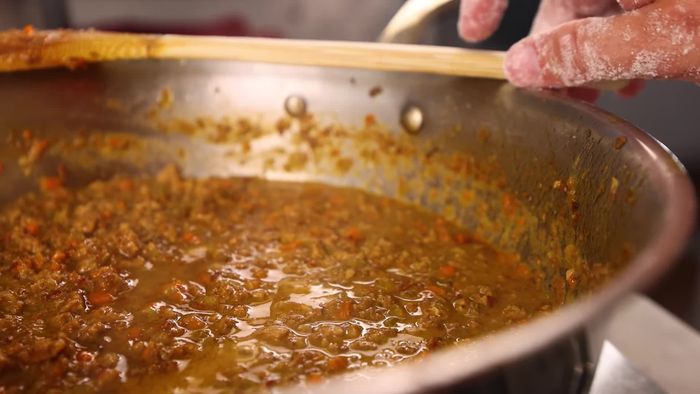Ragù alla Bolognese, the iconic meat sauce of Bologna, Italy, is far more than just a simple tomato-based pasta topping. It's a culinary tradition, a labor of love passed down through generations, demanding patience and a precise understanding of ingredients. Forget the quick, one-pot versions; authentic Bolognese is a slow-cooked masterpiece, a rich and deeply flavorful tapestry woven from finely diced meats, slow-simmered vegetables, and aromatic spices. This complex interplay of textures and tastes is what sets it apart, elevating a humble pasta dish to an unforgettable experience.
The secret to a truly exceptional Ragù lies in meticulous preparation and unwavering attention to detail. We will guide you through each step, revealing the techniques and subtleties that transform ordinary ingredients into extraordinary flavour. Ready to embark on this culinary journey and create a Ragù alla Bolognese that will impress even the most discerning palates? Let's begin our step-by-step guide.
Tools Needed
- Large pan or Dutch oven
- Rolling pin
- Cutting board
- Large pot
Ingredients
Step-by-Step Instructions
Step 1. Preparing the Ragù Base
- Slowly render the diced pancetta in a large pan or Dutch oven over medium heat.
- Add the diced carrots, celery, and onion and cook until softened.
- Brown the ground beef and pork in a separate pan over high heat. Evaporate any released water before browning.
- Add tomato paste to the browned meat.




- Deglaze the meat pan with dry white wine.

Step 2. Simmering the Ragù
- Combine the cooked vegetables, meat mixture, salt, pepper, and chicken stock in the large pan or Dutch oven. Simmer gently for at least 2 hours, or up to 4-5 hours.
- Toward the end of simmering, stir in the milk and simmer gently for another 20-30 minutes.

Step 3. Making Fresh Tagliatelle
- Whisk eggs, olive oil, and salt. Gradually add flour until a dough forms. Knead lightly and let rest for at least 20 minutes.
- Roll out the pasta dough thinly using a rolling pin. Cut into tagliatelle.
- Cook the pasta in salted boiling water until al dente (about 3-4 minutes).



Step 4. Combining and Serving
- Add the cooked pasta to the sauce and toss to coat. Serve immediately.

Read more: Easy Basil Pesto Pasta: Simple, Cheap, & Delicious Recipe
Tips
- Use a Dutch oven for a larger quantity.
- Avoid cast iron as it can leech iron into the acidic sauce.
- Traditional recipes often use equal parts onion, celery, and carrot.
- The Italian Academy of Cuisine recommends cooking the meat and vegetables separately.
- A mixture of ground beef and pork is common in Emilia-Romagna.
- Most traditional recipes omit garlic.
- Add chicken stock gradually to avoid using too much.
- Add an extra yolk or two for a richer, more yellow pasta.
- Adding a teaspoon of olive oil per egg makes the dough easier to work with.
- Don't overwork the pasta dough.
- Boiling the sauce down towards the end increases the concentration of flavor and creates a luxurious texture.
- A little starchy pasta water helps emulsify the sauce.
Nutrition
- N/A
FAQs
1. Can I use ground beef instead of the traditional mix of meats?
While convenient, ground beef alone lacks the depth of flavor provided by the combination of beef, pork, and sometimes veal. The traditional mix offers a more complex and nuanced taste.
2. How long does it take to make authentic Bolognese Ragù?
Authentic Bolognese requires patience! The simmering process typically takes at least 3 hours, allowing the flavors to meld and deepen. Some recipes even call for simmering overnight for an even richer result.
With patience and attention to detail, you’ve now mastered the art of making authentic Bolognese Ragù. Enjoy the rich, complex flavors of this culinary masterpiece, savoring the fruits of your labor. Buon appetito!
